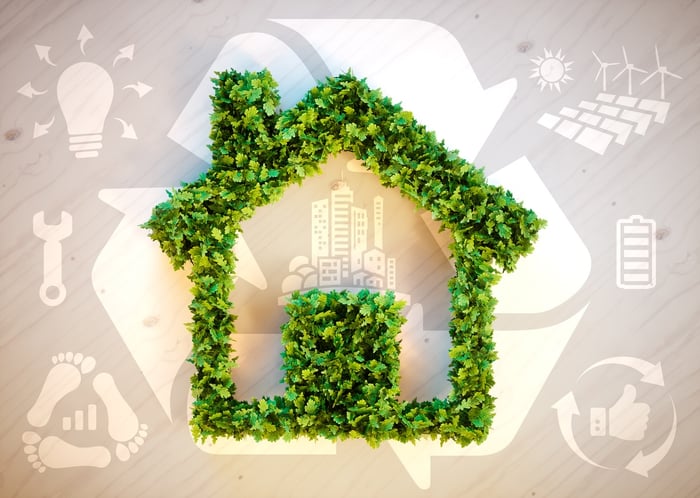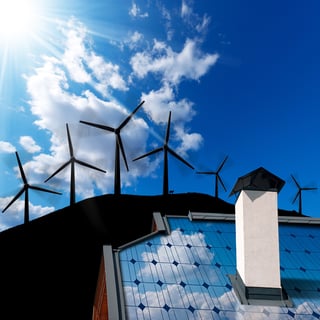
Dealing with claims related to green buildings adds a bit of complexity to the claim handling process. Claims for repairs to conventional buildings will usually be priced per square foot. It's not that simple with green buildings.
What is a Green Building?
As defined by the EPA, “Green building is the practice of creating structures and using processes that are environmentally responsible and resource-efficient throughout a building's life-cycle from siting to design, construction, operation, maintenance, renovation, and deconstruction. This practice expands and complements the classical building design concerns of economy, utility, durability, and comfort. Green building is also known as a sustainable or high-performance building.”
In addition to green homes, green building practices are common and gaining popularity with retail facilities, schools, laboratories and healthcare facilities. The EPA provides cost savings through reductions in energy consumption for buildings that meet the EPA’s Energy Star Program requirements.
The LEED Certification Program
In 1998 the Leadership in Energy and Environmental Design (LEED) certification program was started. A building can be certified for the incorporation of sustainable design and use of green building methods. Claims involving LEED-certified structures are more time-consuming and possibly more expensive because there is more work required to get the building back to the level of certification it had before the damage.
As the number of green building claims increases, so will the information and statistics on these claims. The duration of the claim may be longer due to the added complexity. The number of contractors certified in green buildings will need to grow with demand as well.
 Areas of Concern
Areas of Concern
#1 If there is a shortage of contractors that are certified green builders, it may impact the wait time for the repairs to be made. This is especially true if the damage was caused by a natural disaster, and many buildings were impacted.
#2 Consultants/Subconsultants and Subcontractors: Lack of experience by these parties in green construction can lead to problems obtaining LEED certification, delays and improper material specifications.
#3 Buildings that are LEED certified may take more time and effort to return the building back to that level of certification, which results in higher costs. If the building cannot be occupied, then the cost of living expenses will be on the rise while waiting for the building to be fixed.
#4 Because there are different levels of LEED certifications, the materials (and cost of) will vary. The quality of materials used in original construction must match the quality of repairs.
#5 Once the repairs are made to the building, various testing is required for recertification. This will take additional time to accomplish.
#6 Regulatory: New building codes and mandates associated with green construction can mean an increased liability to everyone involved in the green construction process.
The green building market has been on the rise since 2008 and continues to grow. Millennials and Generation Z are the generations most willing to pay more for sustainable offerings or buy from companies who are committed to positive social and environmental impact. This type of buying behavior may increase the demand for green buildings. As the number of green buildings increases, so will the number of claims.
Conclusion
Dealing with green building claims has some complexity to it. They cannot be handled the same way as conventional claims. Not only do we see claims after the building has been completed, but we will also see claims during construction.
The popularity of these types of building is increasing. Companies want to advertise that their building is “green” or “LEED Certified.” Careful attention is needed during construction to ensure the proper products are used as promised and all regulations and codes are followed. Disputes will arise if these buildings don’t meet LEED criteria; claims and litigation will follow.
Are you ready to handle these types of claims?





